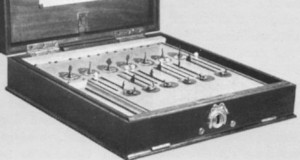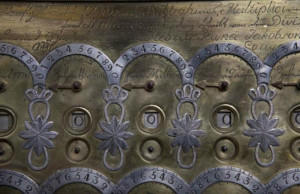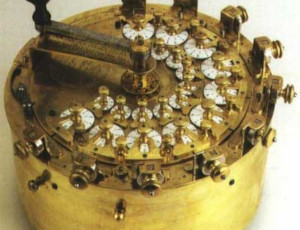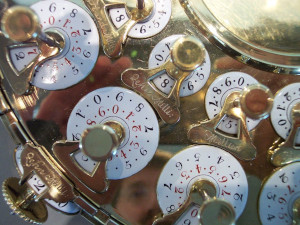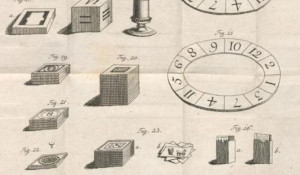
Christian Ludwig Gersten
In 1735 Christian Ludwig Gersten (1701-1762), a professor of mathematics at the University of Gießen, traveled to London, to be elected a fellow of the Royal Society and to present to the Society his project of an arithmetical machine. In his description, he claims, that the machine had been designed..Read More
Pierre Jaquet-Droz
Pierre Jaquet-Droz (1721-1790) was a celebrated Swiss watchmaker and mechanic from the 18th century, known for his elaborate watches and mechanical devices, three of which are of particular interest in the context of this site—the humanoid automata the Writer, the Draftsman, and the Musician. ierre Jaquet-Droz was born in 1721..Read More
Jacob-Rodrigues Pereire
In the July 1751 issue of the earliest scientific journal in Europe—the french Le Journal des Sçavans, was published a description of Machine Arithmétique of Jacob-Rodrigues Pereire. The device was initially made as an aid for deaf and mute people (Pereire is known as the first teacher of deaf-mutes in..Read More
Friedrich von Knaus
Friedrich von Knaus(s) (1724-1789), was a German watchmaker, mechanic, and inventor, who built clockwork mechanisms that could, in a simple way, play musical instruments, write short phrases, or conduct other individual, specialized tasks. It is believed, that namely, Knaus created the first writing automaton. howing his capabilities at an early..Read More
Jewna Jakobson
The mechanical calculating machine of the Jewish clock-maker and jeweler Jewna Jakobson was created around 1770 in the town of Nieswiez on the territory of former Lithuania, then the Russian Empire, Poland, USSR, and now in Belarus. A significant part of the population of Nieswiez was Jewish at that time..Read More
Philipp Matthäus Hahn
In 1770 the Württemberg pastor, astronomer, engineer, and entrepreneur Philipp Matthäus Hahn turned his attention to the creation of calculating machines, devising a simple calculation device (so-called Rechentrommel – calculation drum), then an adding device, and finally a more elaborate cylindrical calculating machine. The first two devices were not so..Read More
Charles Stanhope
The British statesman and versatile scientist Charles Stanhope, Viscount Mahon, was a very strange peer—a full of temperament man with enormous mental energies, voice, and earnestness, who devoted a large part of his time and income not to pleasures and parties, but to experiments, science, and philosophy. nterestingly, in the..Read More
Wolfgang von Kempelen
The Austro-Hungarian versatile nobleman, scholar, architect, and inventor, Wolfgang von Kempelen, was mainly known for his fraudulent chess-playing Turk automaton, created in 1769. The Turk was considered the most famous illusion in history (it was exhibited with great success in Europe and USA until late 1854 when it was consumed..Read More
Johann Helfrich Müller
The German engineer and master builder—Johann Helfrich Müller (1746-1830) is a very interesting figure in the world of mechanic calculators, not only for his small calculator, essentially an improved version of the machine of Philipp Matthäus Hahn, which he created but for his plans to build a difference engine almost..Read More
Johann Conrad Gütle
The first man, who was flashed upon to use electricity for calculation purposes, was probably a German mechanic, showman, electrifier and miracle healer, physicist, chemist, teacher, author, and mail order company owner, named Johann Conrad Gütle (1747-1827). Gütle was a self-taught scientist, who from 1780 worked as a traveling experimenter,..Read More

